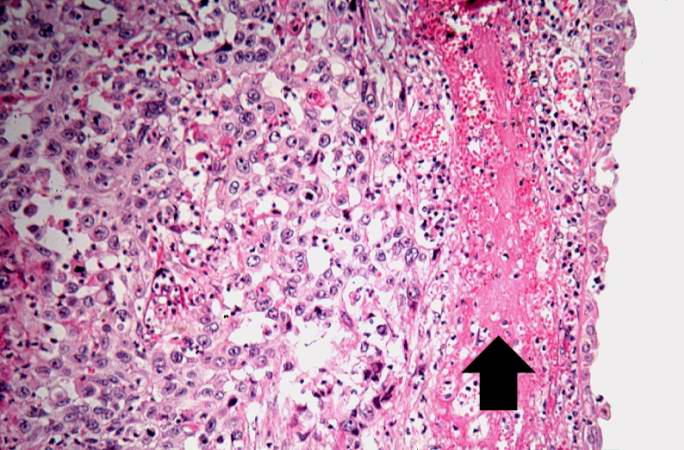Lung cancer case study one
|
Lung cancer Microchapters |
|
Diagnosis |
|---|
|
Treatment |
|
Case Studies |
|
Lung cancer case study one On the Web |
|
American Roentgen Ray Society Images of Lung cancer case study one |
|
Risk calculators and risk factors for Lung cancer case study one |
Editor-In-Chief: C. Michael Gibson, M.S., M.D. [1]; Associate Editor(s)-In-Chief: Kim-Son H. Nguyen, M.D., M.P.A., Beth Israel Deaconess Medical Center, Harvard Medical School, Boston MA, Cafer Zorkun, M.D., Ph.D. [2]
Overview
Clinical Summary
This 55-year-old white male had a long history of emphysema and a 60-70 pack-year smoking history. He was in his usual state of health until about one month before admission, at which time he developed increasing dyspnea on exertion. At the same time, his sputum increased from two tablespoons to half a cup of yellow blood-streaked sputum a day. Chest x-ray showed a right hilar mass. Sputum cytology revealed abnormal cells that were "positive for malignancy." He later developed pneumonia and fever. The patient expired soon thereafter.
Autopsy Findings
Significant findings included advanced carcinoma of the right main stem bronchus with extension across the carina to produce obstruction of the left main stem bronchus. There was left lower lobe pneumonia and left upper lobe atelectasis. Extensive metastases were present in regional lymph nodes as well as the pericardium, left atrium, and right kidney.
Histopathological Findings








